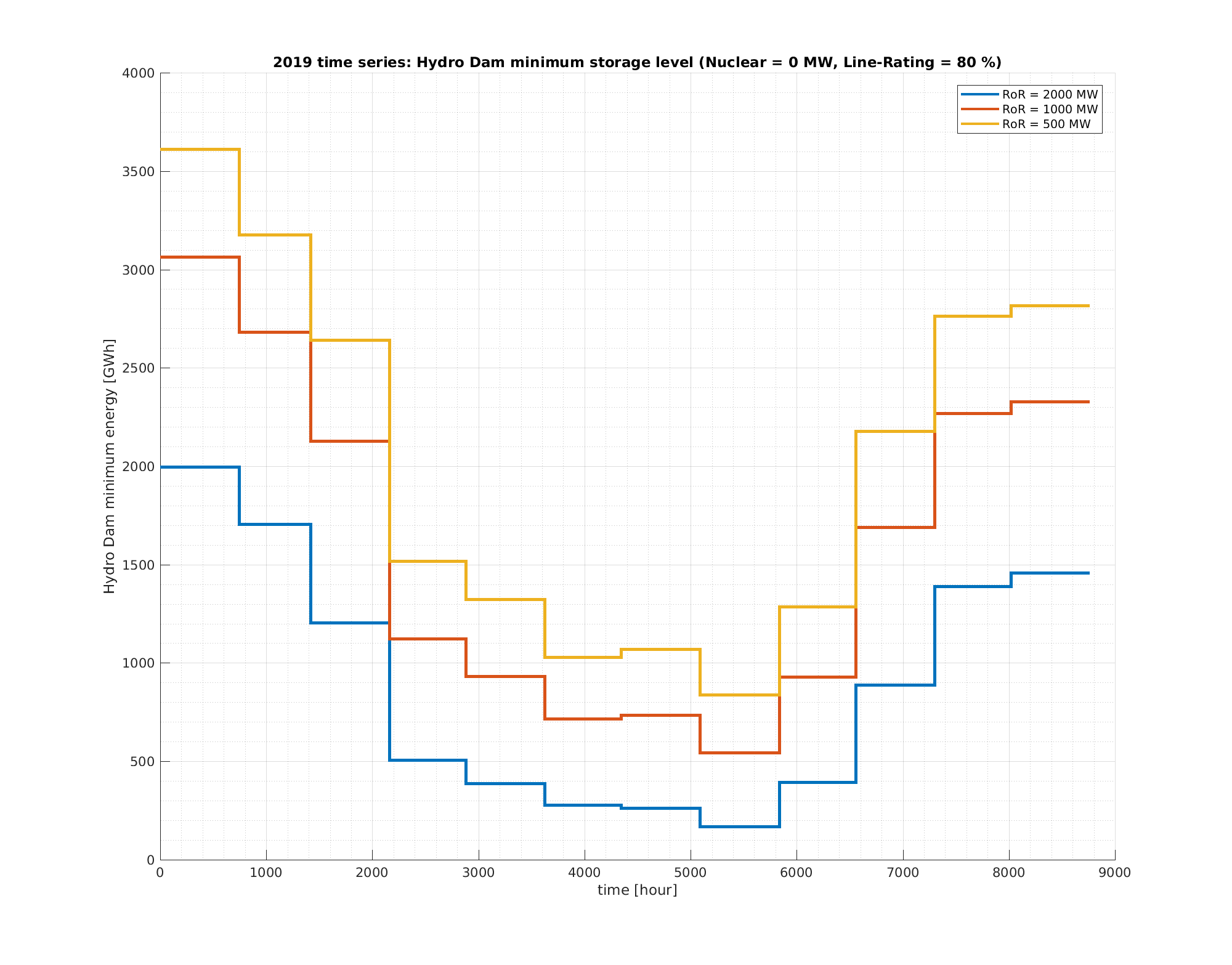SCCER-FURIES Digitalization
The aim of the project is to develop a novel high-performance computational tool for the secure scheduling of storage units operating simultaneously at different time scales. To this end, the project first reviewed the problem formulations from related projects involving AC-OPF problems with multiple problem instances. The goal is, to solve a unified problem formulation of the multi-time scale scheduling problem efficiently to obtain detailed and useful operating solutions in a practical solution time.
A unified problem formulation has been developed, including security constraints, multi-time scale storage scheduling, rate constraints and reserve procurement. The formulation was then applied to three types of problems with different time horizons: intraday battery scheduling for the storage sizing of a Swiss utility in a rural area, co-optimization of energy arbitrage and frequency reserves on a horizon of multiple days for a potential compressed air energy storage in Switzerland and the seasonal scheduling of secure hydro usage in Switzerland.
- An integrated tool is developed for the secure scheduling of transmission grids with storages at multiple time scales (seasonal, monthly and intraday operation). Similarly to real-world operation, the tool separates network security and economic optimzation of the storage schedule, connecting the two only with critical key constraints. The outcome and code base (Matlab/Matpower and Python/Gurobi) is relevant for projects with the operational planning and scenario assessment of large-scale transmission grids. [Tool: in-house MPOPF and storage scheduling tool]
- The tool assesses the load flow security of a power system relying on both short-termand long-term storages.
- The tool employs a bi-level approach to determine a secure storage schedule:
1) Solve an AC-power flow problem for every time-step to identify generation constraints as a lookup-function of the network state.
2) Solve a quadratic program to determine the time-coupled storage schedule. - Compared to a full-year-nodal-dispatch, the approach significantly reduces the problem complexity and accounts for the operational data availability:
1) Limited predictability of the hourly load flow scenarios months ahead (instead a distributional approach is used).
2) In practice, storage operation and grid operation is also mostly decoupled (accounted for by the bi-level approach). - The tool is applied to a Swiss-European transmission grid model for operational planning of the Swiss hydro production units.
- It decouples the storage scheduling from the grid, only using on the identified constraints (flow limits, storage level requirements like "Winterreserve", see Figure) in addition to the storage model.

Partners: ETHZ (FEN), USI (ICS)
Duration: 07/2019 - 12/2020
Funding: Innosuisse
Project Leader: ETHZ
Project Team: Dr. Alexander Fuchs